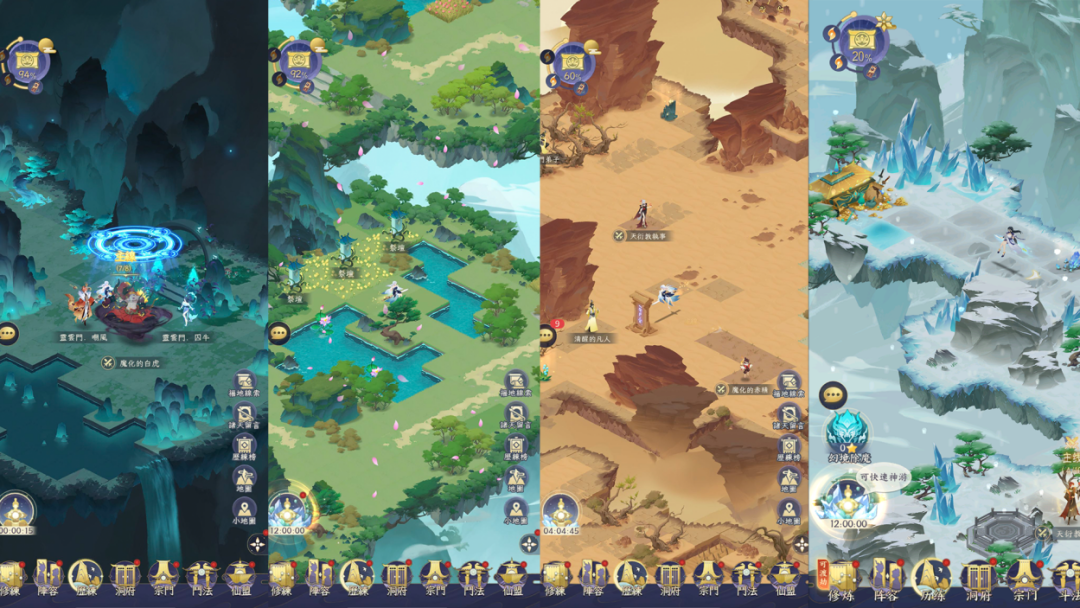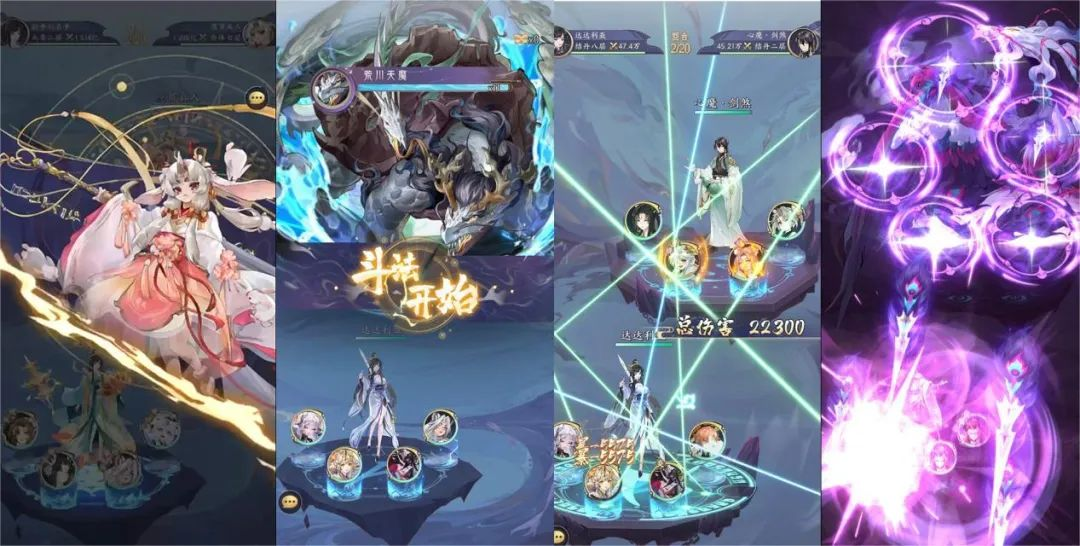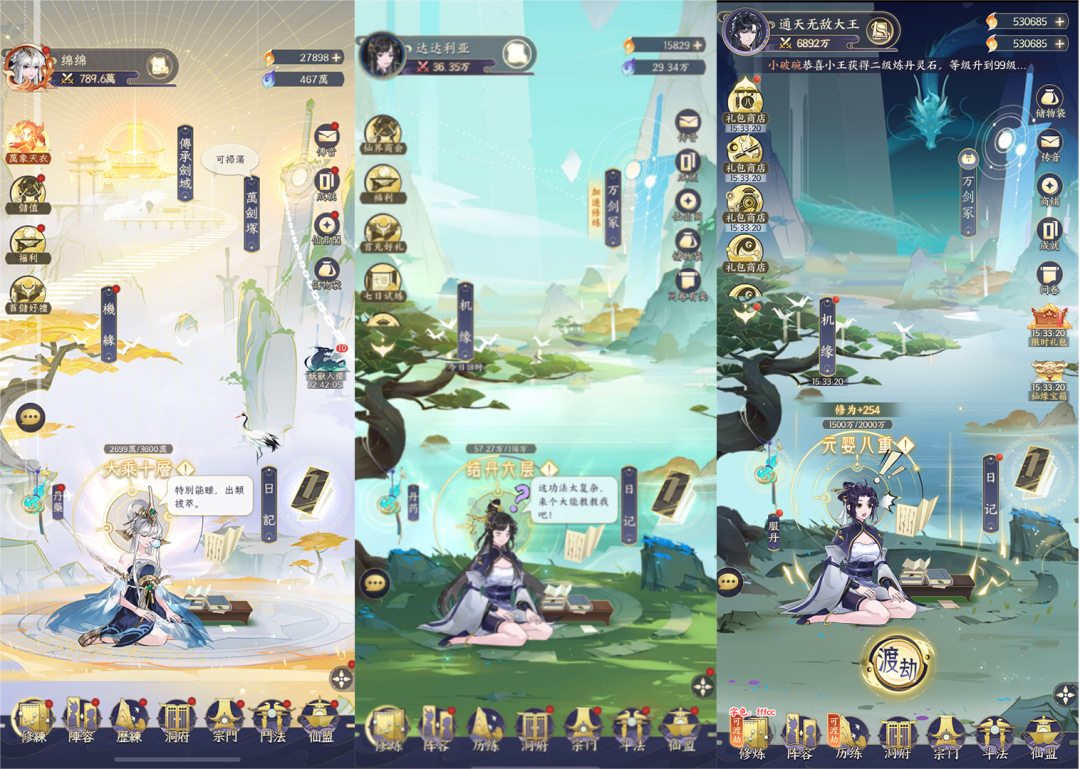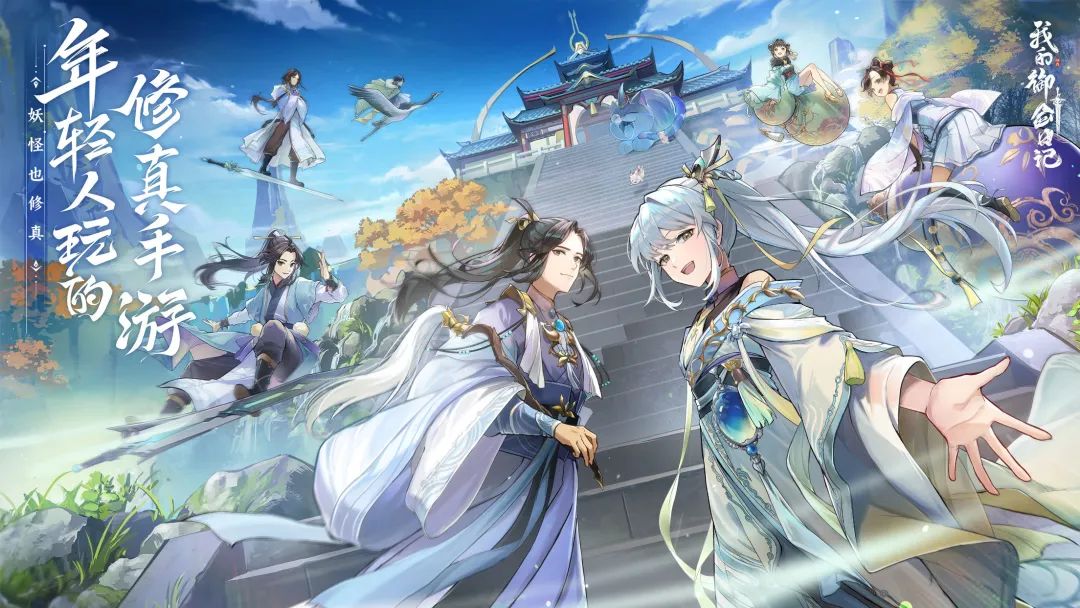If you often surf the internet, watch dramas or play games in China, you might find the trend of xianxia, a genre based on fantasy, martial arts, and Chinese mythology. Whether on internet tv dramas, gaming sites sharing new xianxia games or seeing a xianxia ad on the subway. The genre has always stood tall in China's pop culture. One xianxian-themed game on phones is gaining popularity.
"My Royal Sword Diary" is a monster card mobile game developed by Yuefu Mutual Entertainment based on Cocos Creator. After the game's launch on May 18, over 50 million users played the game in the first week.
"My Royal Sword Diary" was created by Cheng Liangqi (Lao Wolf), a known developer of great games in China. The research and development cycle for the game started in 2020, nearly three years from its release. As an exploratory card game played by young people, the concept of using "monsters" was put forward, which differs from the traditional practice of a male protagonist. In this work, monsters are the main force of immortals, and players will practice spiritual practices and battle with a group of monsters.
Daily play rewards, card cultivation, and experience of learning about the plot are the core features of My Royal Sword Diary. In the early stage of the game, players can first learn all kinds of skills and follow the main tasks to gradually understand the game's playing style, which brings a better game experience for the later stage. The game's tasks are divided into many main tasks, side quests and combat tasks. After completing the task, players can obtain a large number of gold coins and experience points.
Encountering adventures and treasure boxes help players quickly upgrade and unlock more resources and skills.

In terms of game combat, the core combat is automatic turn-based combat: The enemy and four friends attack you and your four friends in order of action. You can strategize with four clan monsters with their styles in the fight and do multiple things like attack suppression, single-point blasts, poison, fire, double attacks, and other fighting styles.

As a game with "bring monsters together to cultivate the immortals" as the core slogan, "My Royal Sword Diary" has designed rich content for players and demon spirits. For example, the five goals, such as sword building and magic, correspond to different gameplay, respectively, for players familiar with the theme of cultivation can even develop the demon spirit as "another self," most of the monsters (demon spirits) come from classic stories. There is specific textual research on the skills of these creatures.

In addition, the game also combines the experience of an open world. There is greater freedom to explore, supporting players to explore the world map to find adventure. It was hoped that the design would make the player bid farewell to the boring meditation, lying down, sitting, or even sleeping to regenerate health or enemies.
It can be said that "My Royal Sword Diary" has received extensive attention from the industry. The players from the closed beta largely shared their experiences with media websites.
What are the creative and R&D concepts behind the game? We interviewed the Yuefu Mutual Entertainment "My Imperial Sword Diary" project team. We talked about the story behind the game development.
Make a player happy playing your Xiaxian card game
Cocos: First, can we get a brief self-introduction of your team?
YME: We are the Yuefu Mutual Entertainment "My Imperial Sword Diary" project team, most of the team members are the creators of the original "Young Three Kingdoms" series of games (including planning, art, technology, publishing, and other types of work), we have worked together for many years, some even more than ten years. There is a complete foundation of trust between each other. At the same time, the team also absorbed a lot of senior game industry members, and we worked together to develop our favorite game projects.
C: Tell us how you started building "My Imperial Sword Diary"?
YME: Initially, we wanted to make a small project of a text-based cultivation game (Editor Note: Cultivation games are games where you upgrade yourself to the point of being an immortal God) so that we could grind the team together and quickly launch a game. On the other hand, we had to satisfy our personal preferences - many team members are very fond of the cultivation theme, including Old Wolf. However, the suspension of ISBN distribution disrupted our plan. We were forced to make it into a medium-to-large project, which is now "Royal Sword Diary." The team size has changed from more than ten people in the original DEMO to sixty to seventy people.
*Editor note: In China, each game must have a patent and ISBN number to be approved for game sales by the government. During the past three years, the issuing of ISBN numbers was very limited, but has returned to a more typical number in 2023. You can learn more from our past article.
C: Why did the team choose the theme of cultivation? How did you get past similar games and attract players to play?
YME: From the CEO to the producer to the various members of the creative team, they all are deep users of cultivation games based on novels and anime (the boss, Old Wolf, was the first to write an immortal novel game), so they chose this subject immediately.
We actively try to re-express the theme of cultivation and make it more joyful and relaxing for young people, which is also one of the trends of mainstream cultivation games nowadays.
In traditional card games, the main plot revolves around a linear level of growth. To adapt to the theme of cultivation, we have changed the linear levels into a large map for free exploration, which can also be considered a small world of immortal cultivation.
My Royal Sword Diary is an immortal cultivation card game. Still, unlike the usual orthodox and serious eternal cultivation themes, the Sword is more youthful and joyful in its art & theme expression, which is more in line with the demands of young players nowadays.
In the large map, there is not only a main plot for players to experience but also resource points such as minerals and herbs to explore. In addition, there are many random events on the map, for example, when opening treasure chests, you may encounter guardian demon beasts and enter into the battle. You may also encounter traps and need to solve puzzles.
Through these designs, the game experience tends to be as close as possible to the immortal cultivation experience that users are familiar with, shaping a relatively realistic and immersive cultivation world.
In terms of the difference in themes, the main tag of "monsters also cultivate" in Royal Sword Diary overturns the previous concept of cultivating immortality as a solo fight and makes the concept of cultivating immortality as "a carnival of a group of people (monsters)," and reinterprets some monsters and foreign beasts from Chinese mythology.
"Cultivation" is essentially an RPG system that emphasizes the linear growth of individuals, so in the related works, except for the main character and a few people, everyone else lacks the ability to grow. But this is contrary to the design of card games, which need to focus on "multi-character multi-growth" rather than a single individual.
Therefore, balancing the relationship between the theme of cultivation and the card category became another major problem in the early stage of development. It is a good thing that when we did "Junior Three Kingdoms," we designed a similar protagonist system, which is independent of the regular card formation and can meet the players' demand for individual linear growth. Therefore, this accumulation of growth points was applied to "My Royal Sword Diary," a series of adjustments were made to the theme, highlighting more the sense of growth brought by cultivation.
Based on this consideration, the game also appropriately reduces the depth of the combat gameplay, avoiding too tedious operations and excessive decisions so that players are focused on the growth of the cultivation system: constantly improving their realm, refining stronger magic treasures, and collecting more heart methods, thus satisfying their fantasies about the subject matter.
C: What kind of game experience or feeling does the team want players to get from My Royal Sword Diary?
YME: The core developer still wants to let the players experience a happy game. Because the same kind of immortal games is available yearly, most are orthodox immortals, and many jargon terms exist. So we had to go a different way. At first, we set the tone as easy-to-fix immortals, then found that relaxed directivity is too broad. Some people enjoy the styles in novels, and others enjoy styles in TV dramas. We cannot agree.
But if it's fun, everyone will soon be able to agree. For example, after the player's first battle, the protagonist will say, "Finally won, we 5 are outstanding (I am the best)." When the player receives the rewards for returning to the game, the following will show "In the hours you left the game to fish, you got..." 」These add a special touch compared to other games.
Visually, we also used interesting character expressive faces and real-time animations in the big world map to add to the story.
C: The game has achieved quite good results after its first release. The current operational progress and data? What are your plans for the near future?
YME: Fifty million gamers in the first week. We planned to usher in the first new version at the end of June and early July, with the new gameplay and new roles. During the summer period, we will actively try to cooperate with external IP.
C: What is the future goal of My Royal Sword Diary?
YME: The goal is to be able to operate it for a long time and gradually accumulate core players through more product research and development and user comments. But we also hope that My Royal Sword Diary can become the top in mobile card games and that Yuefu Mutual Entertainment can become one of the top companies in the genre.

Technology selection, optimization, and application sharing in game development
C: What were the criteria to consider when selecting technology? Why did you choose Cocos Creator?
YME: At the beginning of the project, we chose Cocos Creator based on the type of project (2D card-based) and the possible future platform (phone platforms, possibly mini-games), combined with our team's technical strengths (many years in Cocos-related technology development). Of course, it is undeniable that for technical people, the attraction of an open-source engine is the first thing that can be traced back to the source of problems and ensure that there are not too many black box problems. At the same time, the freedom of optimization and extensions supported by the engine is a feature that our team values. The seamless official communication and technical support also give us guarantees. In addition, Cocos Creator is based on Electron, which facilitates the development of various auxiliary tools and is advantageous for later developing a unified toolchain.
C: What game optimization methods are worth sharing in the development process for card games?
YME: After several Cocos-based card projects, we have summarized the following significant and effective optimization methods:
- Componentization: Improve the reusability of functions by componentization, and improve the freedom by combination rather than inheritance.
- Plug-in efficiency: Even if it only improves efficiency by 10%, we should try our best to do it. After all, game development is a group project.
- Rendering optimization: The experience of the game comes from all aspects. The technical staff can make the user feel the game is running smoothly, not stuck, and not slow.
- Object memory pool: High-frequency UI components are integrated into the memory pool, improving efficiency significantly.
- Make good use of memory: Lowering the memory footprint is sometimes not the best solution. A good strategy is to use device hardware to ensure optimal performance and memory for time.
C: What aspects of the game will be focused on optimizing next?
YME: After nearly three years of development, the amount of code and resources have been relatively large, and there will inevitably be some features and code with poor readability and maintainability, which we will gradually optimize with each version. At the same time, functional integration and refactoring are also necessary means to solve performance and efficiency problems. Finally, the editing efficiency of the editor directly affects the development efficiency, and we will focus on breakthroughs next.
C: What do you think about applying AI technology in game development? Do you have any specific practical experience to share with the team so far?
YME: At present, AI is mainly used in the technical and art teams to help improve efficiency. The technical team mainly uses AI to suggest code implementation, assist in code review, and enhance code review efficiency. The art team mainly uses AI to quickly provide art prototypes that meet the requirements for rapid iteration, which is more helpful for original drawings and icons.








